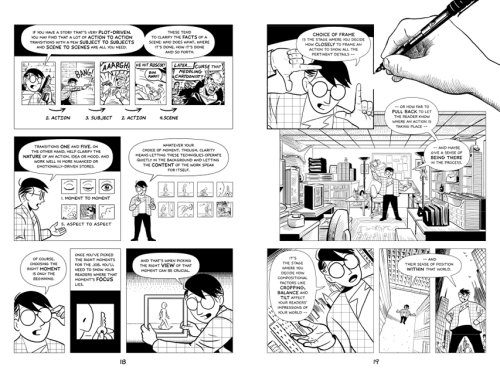
So you want to create your own manga but don’t know how to put your ideas on paper? You’ve come to the right place! We’ll give you a short overview of how to write a story that works well with the manga format and point you in the direction of resources that can give you even more in-depth tips and tricks. Let’s get started!
Structure and Goals
Comic books are published one chapter/issue at a time, gradually revealing the story in small chunks over a matter of months or years. Unlike novels or movies that can afford to be vague or slow-paced because their audience already has the entire story at their fingertips, comics must keep a reader’s interest chapter by chapter, lest they risk cancellation.
The keys to writing a good comic/manga story (or really any story, to be honest) are structure and clearly defined goals. Readers can tell when an author is writing by the seat of their pants–characters and story elements are introduced and then forgotten about, arcs don’t seem to connect to one another, and nobody’s motivation seems clear. It can be interesting at the moment, but taken as a whole, it’s a mess.
But if you take the time to plan out your story ahead of time, or at least the major plot points you want to hit, your audience will have more faith in you. Give characters relatable goals: Naruto wants to be acknowledged by his village, Emma wants to keep her family safe, Jonathan wants Dio to come to his senses. Check out books like The Hero With a Thousand Faces by Joseph Campbell and Shoujo Manga Techniques: Writing Stories by Mako Itsuki for more details.
Remember, it’s a Visual Medium
One of the most important rules of storytelling is “show, don’t tell”. Rather than giving a character dialogue explaining how scared they are, have them flinch at sudden noises and clutch their friend’s arm for comfort. This advice goes double for manga, since you can use art to tell your story just as (if not more) effectively than with words.
Think of the most memorable moments from your favorite manga. Winry’s distraught expression as she shakily points a gun at Scar in chapter 46 of Fullmetal Alchemist tells you everything you need to know about her internal conflict in that scene. We don’t need any dialogue to understand that she’s caught between avenging her parents and continuing the cycle of hatred that only leads to more violence.
On a smaller scale, the differences in posture and character design between Kyo and Yuki Sohma make their long-standing rivalry clear as day, even when they’re not actually arguing. For a comprehensive breakdown of how to use comic visuals to tell a story, check out Making Comics by Scott McCloud.
Learn From Many Different Teachers
You might’ve noticed that we haven’t been sticking strictly to Japanese reference books or terminology here, and that’s for a good reason. If you only study tutorials for manga, you’ll miss out on the endless variety of inspiration and techniques that the world has to offer.
Analyze your favorite manga, but also look at Western underground graphic novels and foreign live action films. Compare manga from the ‘60s and ‘70s to current works–which elements have stayed the same, and which have fallen by the wayside? Is there a difference between how comics and TV tell their stories, even though they share the same serialized format? The more you learn, the easier it will be to find a storytelling method that is fulfilling for you and pleases your readers at the same time.
Final Thoughts

Lastly, make sure you’re creating a manga for the right reasons. It’s incredibly difficult for a Westerner to break through the market with manga, so don’t set out on this journey in hopes of becoming famous. Write stories because they make you happy, and that happiness will surely radiate to anyone who reads your work. When you love your manga no matter what little money it makes you, you’ll know that you’ve succeeded.
What did you think of our brief dive into manga storytelling? Have you ever written a comic before? What ideas do you have kicking around in your head? Let us know in the comments, and thanks so much for reading!
[PR_honeys title="Honeys Anime Recommends!" text="Stories for novels are difficult, but imagine handling a manga story which is even more difficult since you have to work with less text. Some mangaka do it though, and that's how they become famous. It's not easy to become a star in the manga world, but there is a way. If you are wanting to improve your own manga, organization, art skills, direction, or more, we recommend the “Manga Drawing / Comprehensive Course” from Manabi Journey. The course has produced over 100 professional manga artists in Japan. With complete support in English while learning directly from the professionals, you can put your mind at ease and your pen to work! Check it out by clicking on the banner below!" url="https://tour.manabijourney.jp/mangadrawing//?utm_source=honeysanime&utm_medium=banner700x200&utm_content=inside-single&utm_campaign=manabijourney-mangadrawing-comprehensive2" onclick="ga('send', 'event', 'link_external', 'click', 'to_manabi_journey_manga_comprehensive2@single_pr');" img=' ']
']

